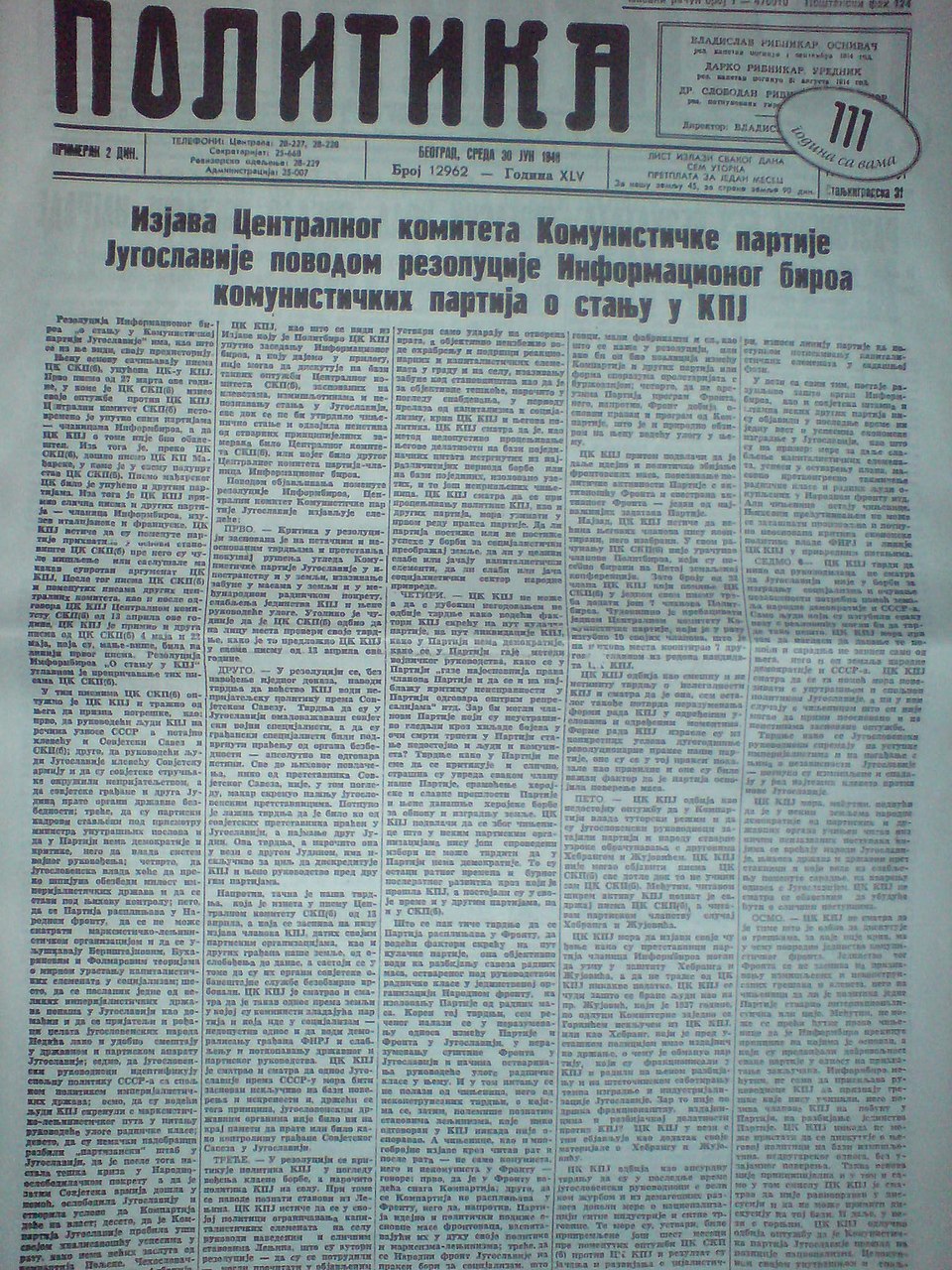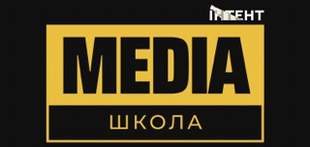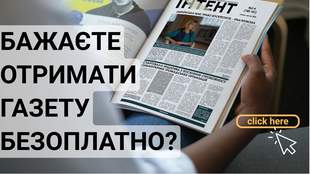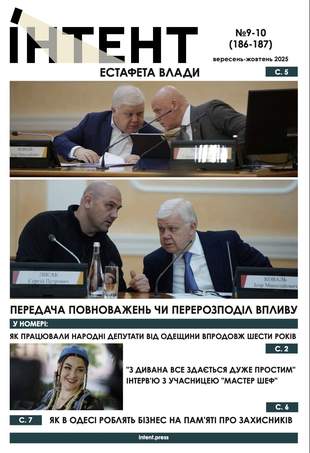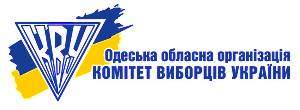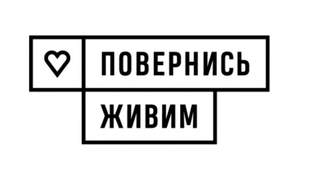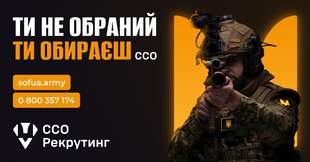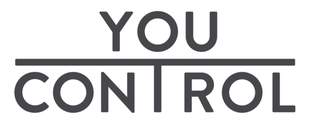Меню
Social networks
Sections
April 10, 2025, 11:11 p.m.
Tito and Stalin: From Allies to Adversaries in Post-WWII Yugoslavia
Цей матеріал також доступний українською639
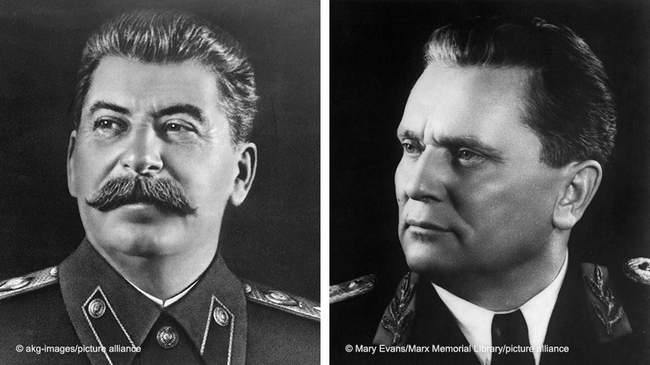
Image: dw.com
During the Second World War, Josip Tito and Joseph Stalin were like-minded people. There is a version that Stalin considered Tito as the future leader of the socialist camp after his death. However, just a few years after the end of the war, the two leaders came to a violent conflict. Stalin was not used to someone disobeying him, and Tito was not used to losing.
Yugoslavia during World War II
The story of the short friendship between Stalin and Tito
The USSR presses, Yugoslavia responds
Yugoslavia during the Second World War
On March 25, 1941, Yugoslav Prime Minister Dragisa Cvetković signed a protocol in Vienna on the country's accession to the Triple Pact, i.e., the alliance of Germany, Japan, and Italy. The people of Yugoslavia responded with massive protests and rallies, and two days later a group of air force officers led by General Dušan Simović staged a coup d'état. Simović did not dare to break the treaty with the Triple Pact countries, but Hitler considered the new government to be hostile. Therefore, on April 6, Germany attacked Yugoslavia, and on April 17, it celebrated the victory.
After the victory, Germany and its allies divided Yugoslavia. Parts of the territory of the invaded country went to Germany, Italy, Bulgaria, Albania, and Hungary. Three new states were formed in place of Yugoslavia: The Independent State of Croatia, the Kingdom of Montenegro, and the Republic of Serbia. The latter two were occupied by Italian and German troops, respectively.
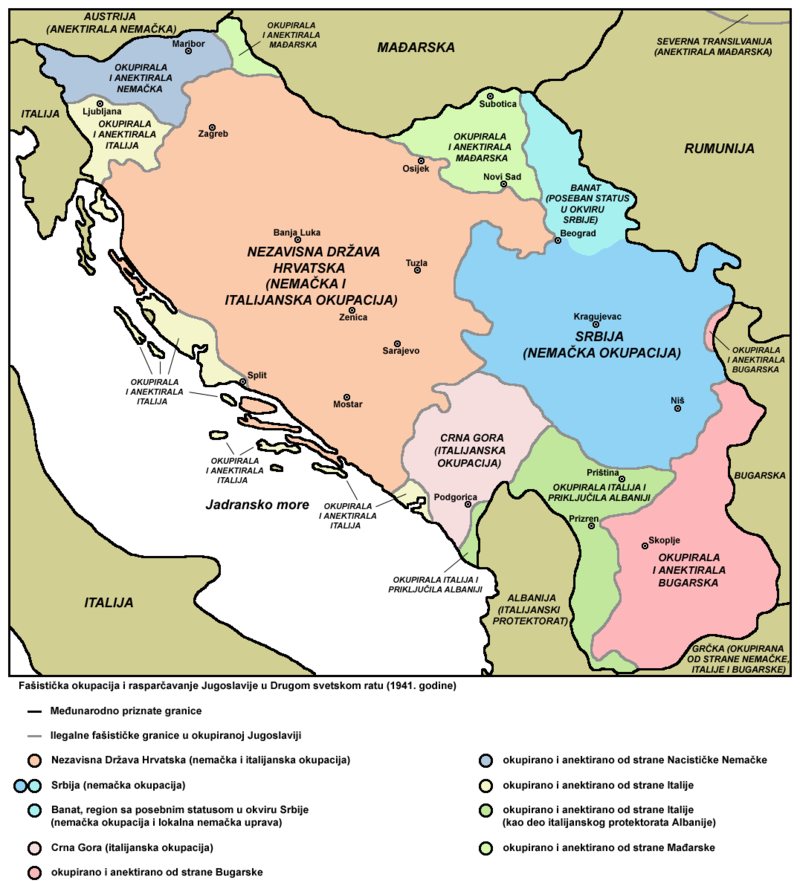
The division of Yugoslavia between Germany and its allies. Map: Wikipedia
Yugoslavia did not lay down its arms after the defeat. Two partisan movements were formed on its territory: Serbian monarchist Chetnik units led by General Dragoljub Mihajlović and communists led by Josip Tito. Initially, the United Kingdom, the United States, and the Soviet Union supported the Chetniks, but from 1943 onward, they relied on Tito's communists.
The liberation of Yugoslavia from occupation was carried out by Soviet troops with the active support of local partisans. In 1944, Tito arrived in Moscow to discuss joint actions to liberate the country and establish communist rule after the war. It was then that the foundations for further cooperation between the USSR and Yugoslavia were laid.
The story of the short friendship between Stalin and Tito
Stalin and Tito felt sympathy for each other. Presumably, this sympathy was based on similarities in character. Both are strong and determined, ready to use any means to achieve their goals.
The problem was that it was difficult for two personalities with such pronounced leadership qualities to coexist in the socialist camp. And while Tito was probably ready to be content with dominating the Balkans, for Stalin the very idea that someone within his sphere of influence could exercise his own will was completely unacceptable. So when they began to cooperate after the war, it was only a matter of time before a conflict broke out.
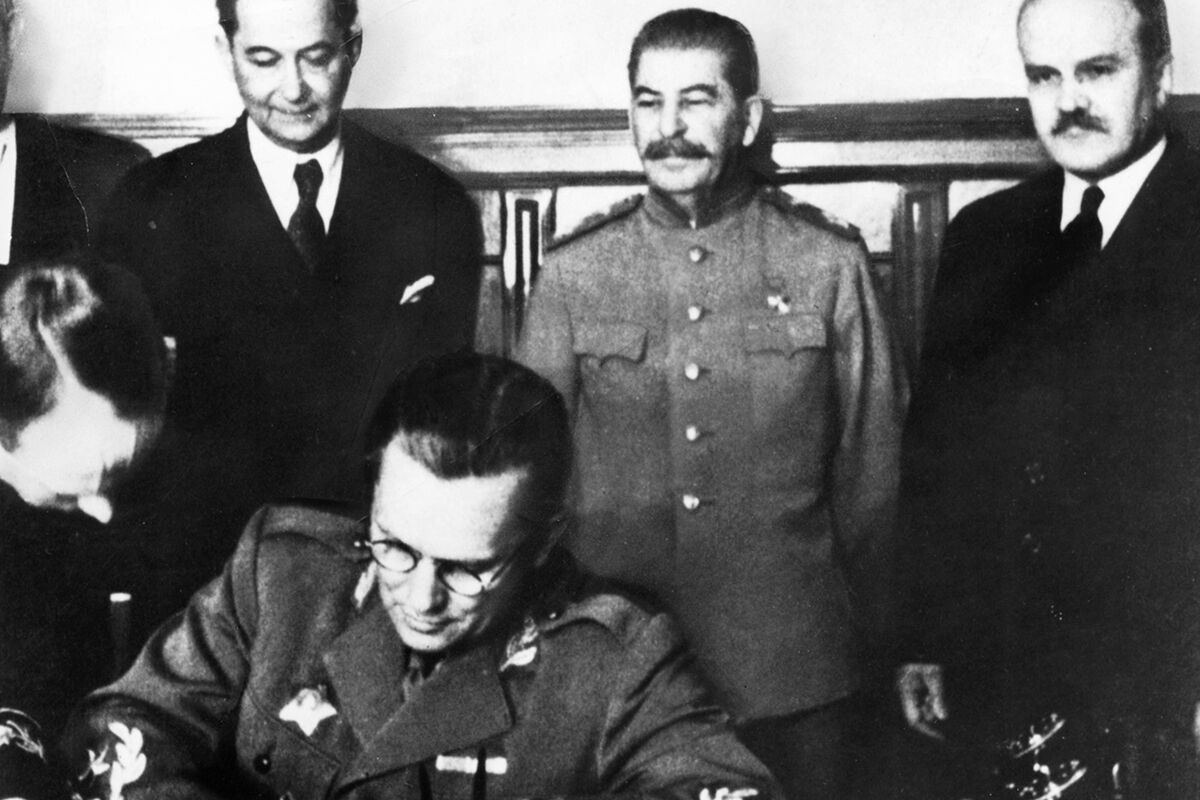
The signing of the Treaty of Friendship on April 11, 1945. Photo: Sovfoto/Getty Images
Immediately after the end of World War II, Stalin began to single out the Yugoslav leader. In mid-1945, to prevent possible assassination attempts, the Soviets reinforced Tito's security with Soviet security officers. In the fall of that year, he was awarded the Soviet Order of Victory. In the summer of the following year, during the funeral of Mikhail Kalinin, Stalin invited Tito to the central rostrum and gave him the floor, which was unheard of for a foreigner. It was then that people began to talk about how Stalin saw Tito as his descendant in the socialist camp.
Tito generally justified the advances made. In particular, he quickly seized power in the country. To do so, he captured and executed General Mihailović's "rival" with the help of the USSR, and subsequently established a one-party system led by the Communists. The entire system of governance was centralized according to the Soviet model: industry, the banking system, transportation, trade, collectivization, etc. were nationalized.
However, the first bell of further misunderstandings sounded immediately after the war ended. In his speech, Tito said: "We will never again be dependent on anyone... Today's Yugoslavia does not want to be an object of agreements and trade." By this, Tito hinted that the key victorious countries immediately after the war began to divide Europe at their own discretion. In response, Moscow threatened to stop such speeches forever.
Tito's foreign policy developed in two main directions. First, Yugoslavia made material and territorial claims against the German allies. And not only to Austria and Italy, which belonged to the capitalist world, but also to Bulgaria, Hungary, and Romania, which were part of the socialist camp. Moreover, Yugoslavia had territorial claims even to its former ally, Greece. The USSR generally supported Yugoslav claims, although it sometimes used them as a bargaining chip in negotiations with the United States and Great Britain.
Secondly, Yugoslavia actively promoted the project of the Balkan Federation, i.e. the unification of the Balkans within one socialist country. Yugoslavia provided assistance to Albania and Greek communists, and negotiated with Bulgaria. The USSR, for its part, supported the project. There was an idea that the Balkan Federation could later be annexed to the USSR as a separate republic.
In a conversation with a representative of the Yugoslav delegation, Stalin directly stated: "We have no special interests in Albania. We will agree if Yugoslavia swallows Albania."
In parallel, Stalin's paranoia about Tito's growing authority in the Balkans and his independence in decision-making was at work. This paranoia was actively fueled in their communications to Moscow by the Soviet ambassador to Belgrade, Anatoly Lavrentiev, and Yugoslav Finance Minister Sreten Žujović.
From friendship to hatred
In February 1948, a meeting was held in Moscow to which the leaders of Bulgaria, Georgi Dimitrov, and Yugoslavia, Josip Tito, were invited. The latter sent his associates to Moscow instead. Presumably, he had already sensed the beginning of the crisis. The Kremlin decided to put its vassals in their place for their excessive independence in foreign relations. Dimitrov was presented with the recent diplomatic contacts with Romania and Yugoslavia. As for Yugoslavia, it was also accused of sending troops into Albania without a resolution from above.
Perhaps at this point it was still possible to plead guilty and get off with a little fright. In the end, the Bulgarians and Dimitrov did just that. However, Tito immediately called a meeting of the Politburo and criticized the fact that relations between the two countries had reached a dead end. The proceedings of this meeting were reported in detail to Moscow.
In March , Yugoslavia refused to provide the USSR with information about the country's economy, which was perceived as outright sabotage against the background of previous misunderstandings. A letter signed by Stalin and Molotov was sent to Belgrade, in which the Yugoslav leadership was accused of pursuing an anti-Soviet line, making opportunistic mistakes, and revising the most important provisions of Marxism-Leninism. In June, the Cominform Bureau (formerly the Comintern) proposed that Yugoslav communists force their leaders to admit their mistakes or, if they refused, to change them.
Yugoslavia's response to the 1948 Cominform Bureau resolution. Photo: Wikipedia
Yugoslavia was now under real pressure, which gradually increased. The countries of the socialist camp began to shun the Yugoslavs. In particular, Albania, against the backdrop of deteriorating relations with Belgrade, began to move closer to the USSR. However, there was no break in relations between the USSR and Yugoslavia. Even in June 1949, the USSR still supported Yugoslav claims against Austria at a meeting of the anti-Hitler coalition.
However, in the spring and summer of 1949, trials were held in the countries of the socialist camp against people accused of having ties to Tito. And in November 1949, at a regular meeting of the Cominform Bureau, all the dots were drawn. It was proclaimed that the Yugoslav Communist Party was "in the hands of murderers and spies" and needed to be liberated.
The USSR presses, Yugoslavia responds
One of the key areas of the struggle against Tito was the deployment of anti-Yugoslav propaganda. The media of the entire socialist camp began to harass Yugoslavia. New media outlets were created for propaganda purposes. A number of radio stations were built around the Yugoslav border. Newspapers and other propaganda materials were imported into Yugoslavia.
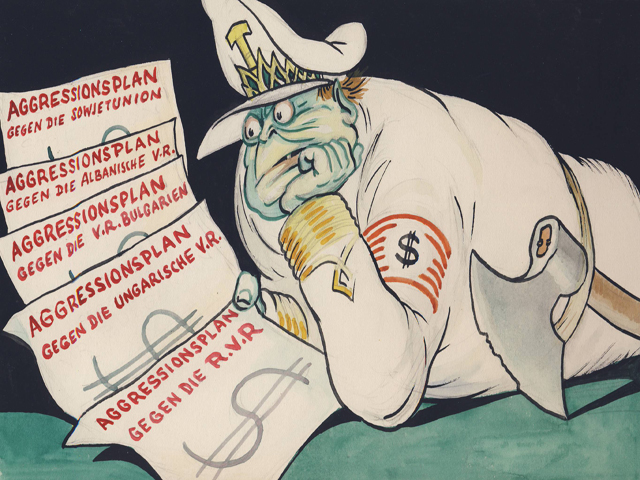
An East German cartoon from 1951 showing Tito. Image: Wikipedia
In parallel with the propaganda, plans for an attack on Yugoslavia began to be developed in the countries of the socialist camp. Yugoslavia was preparing to meet the insurgents. It never came to an invasion. After all, the Yugoslav army at the time of the acute phase of the conflict numbered 500,000 soldiers. In addition, the USSR failed to split Yugoslavia's ruling circles, which supported Tito almost entirely. At the same time, hundreds of incidents, including armed confrontations, occurred on various borders of Yugoslavia.
Throughout the conflict, the USSR developed plans to physically eliminate Tito. The implementation of these plans was actively hindered by Yugoslav counterintelligence, which destroyed the Soviet agent network in the country. During 1948-53, 29 Soviet agents who held high positions were exposed.
According to one of the plans, Joseph Grigulevich, an agent of the Ministry of State Security who had long worked in Latin America, was sent to Yugoslavia as an ambassador from Costa Rica. Since Tito personally met with the new ambassadors, Grigulevic was to spray a dose of pneumonic plague bacteria at the meeting, which was supposed to kill all those present. The agent himself was supposed to survive due to a previous vaccination.
The realization of this plan was stopped by Stalin's death. Interestingly, the meeting between Hryhulewicz and Tito with the presentation of ambassadorial credentials did take place in April 1953.
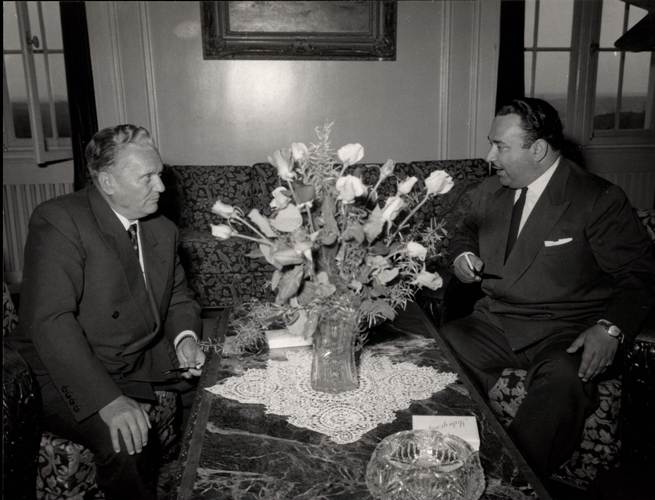
A meeting between Josip Tito and Josef Hryhulewicz. Photo: Wikipedia
In response, Yugoslavia launched a wave of repression against those who sided with the USSR in the conflict. In May 1949, the construction of a prison began on the island of Goli Otok in the Adriatic Sea, and in July the first prisoners arrived there. Yugoslavia's state security agencies were ordered to arrest anyone who supported the Cominform Bureau.
In 1948-49 alone, about 100,000 people were arrested. Some of those who disagreed were forced into emigration. As Yugoslavia found itself in isolation, it began to move closer to the West. The termination of Yugoslav aid to the Greek communists led to their defeat in the struggle for power.
The end of the conflict
After Stalin's death, the USSR began to take steps toward rapprochement with Yugoslavia. The parties agreed to exchange ambassadors again. At the same time, Tito said that after such a conflict it would be difficult to trust the USSR. Belgrade never became an integral part of the socialist camp.
In 1954, Yugoslavia signed a trilateral agreement with two NATO countries, Greece and Turkey. According to the agreement, an attack on one of the countries was equivalent to an attack on all three. The following year, Yugoslavia did not join the Warsaw Pact and tried to stay away from the conflict for the rest of the Cold War.
Conclusions.
The clash between Stalin and Tito is a typical "Soviet" conflict that could be found at different levels of the Soviet system. This system produced slaves who had to obediently follow orders from above. Those who were capable and proactive had to hide their virtues if they wanted to climb the hierarchy. Of course, Tito should not be idealized. He went against the system because he had ambition and his own will. He wanted to lead the system, not destroy it.
If we compare Stalin and Tito, we can find common features: strength, determination, cruelty, pragmatic mind, and leadership qualities. That is why they felt sympathy for each other at the first stage of their cooperation. However, throughout his career, Stalin always viewed the proactive and capable as a direct threat to his power, so a conflict was inevitable.
As the USSR Ministry of State Security actively began to develop plans to eliminate Tito, it was only a matter of time before his elimination. For example, the "ambassador" of Costa Rica, Joseph Grigulevich, was one of those who participated in the assassination of Leon Trotsky. So Stalin's death was an amnesty for Tito.
The clash between the USSR and Yugoslavia showed that the system could be resisted and even defeated. However, all subsequent attempts to free themselves from the Soviet grip ended in brutal suppression. Why was Yugoslavia destined to become the only exception, and in the Stalinist era? A number of factors can be identified here.
First, it was the strength and determination of Josip Tito, who was ready to go all the way in the conflict.
Secondly, it was the strong team of like-minded people who surrounded and supported him. Stalin never managed to split Tito's entourage.
Thirdly, it was a powerful 500,000-strong army that could not be compared to the neighboring countries of the socialist camp. At the same time, the army was loyal to Tito, with whom it fought the Second World War.
Fourthly, Tito's high authority in the Balkans. Even when developing various insidious plans, the leaders of neighboring countries had to be careful, because the situation could change. In the end, it did.
Fifth, Tito had time on his side. He lasted until Stalin's death, and Nikita Khrushchev needed peace with Yugoslavia to show himself as a new kind of leader.
Modern Russia has a lot in common with the USSR and the socialist camp, and Putin has a lot in common with Stalin. No wonder the figures of Stalin and Beria have been rehabilitated in modern school textbooks.
There is a desire to create an obedient system with stupid commanders and a zombified population, and a paranoid vengefulness towards any manifestation of disagreement. Of course, in the twenty-first century, it is more difficult to start a flywheel of mass repression, but we have seen more than enough options for eliminating dissidents over the past 25 years.
